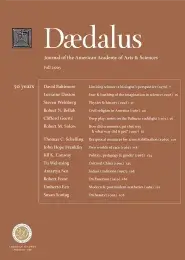The two worlds of race: a historical view (1965)
Measured by universal standards the history of the United States is indeed brief. But during the brief span of three and one-half centuries of colonial and national history Americans developed traditions and prejudices which created the two worlds of race in modern America. From the time that Africans were brought as indentured servants to the mainland of English America in 1619, the enormous task of rationalizing and justifying the forced labor of peoples on the basis of racial differences was begun; and even after legal slavery was ended, the notion of racial differences persisted as a basis for maintaining segregation and discrimination. At the same time, the effort to establish a more healthy basis for the new world social order was begun, thus launching the continuing battle between the two worlds of race, on the one hand, and the world of equality and complete human fellowship, on the other.
For a century before the American Revolution the status of Negroes in the English colonies had become fixed at a low point that distinguished them from all other persons who had been held in temporary bondage. By the middle of the eighteenth century, laws governing Negroes denied to them certain basic rights that were conceded to others. They were permitted no independence of thought, no opportunity to improve their minds or their talents or to worship freely, no right to marry and enjoy the conventional family relationships, no right to own or dispose of property, and no protection against miscarriages of justice or cruel and unreasonable punishments. They were outside the pale of the laws that protected ordinary humans. In most places they were to be governed, as the South Carolina code of 1712 expressed it, by special laws “as may restrain the disorders, rapines, and inhumanity to which they are naturally prone and inclined . . . . ” A separate world for them had been established by law and custom. Its dimensions and the conduct of its inhabitants were determined by those living in a quite different world.
By the time that the colonists took up arms against their mother country in order to secure their independence, the world of Negro slavery had become deeply entrenched and the idea of Negro inferiority well established. But the dilemmas inherent in such a situation were a source of constant embarrassment. “It always appeared a most iniquitous scheme to me,” Mrs. John Adams wrote her husband in 1774, “to fight ourselves for what we are daily robbing and plundering from those who have as good a right to freedom as we have.” There were others who shared her views, but they were unable to wield much influence. When the fighting began General George Washington issued an order to recruiting officers that they were not to enlist “any deserter from the ministerial army, nor any stroller, negro, or vagabond, or person suspected of being an enemy to the liberty of America nor any under eighteen years of age.” In classifying Negroes with the dregs of society, traitors, and children, Washington made it clear that Negroes, slave or free, were not to enjoy the high privilege of fighting for political independence. He would change that order later, but only after it became clear that Negroes were enlisting with the “ministerial army” in droves in order to secure their own freedom. In changing his policy if not his views, Washington availed himself of the services of more than 5,000 Negroes who took up arms against England.1
. . .
